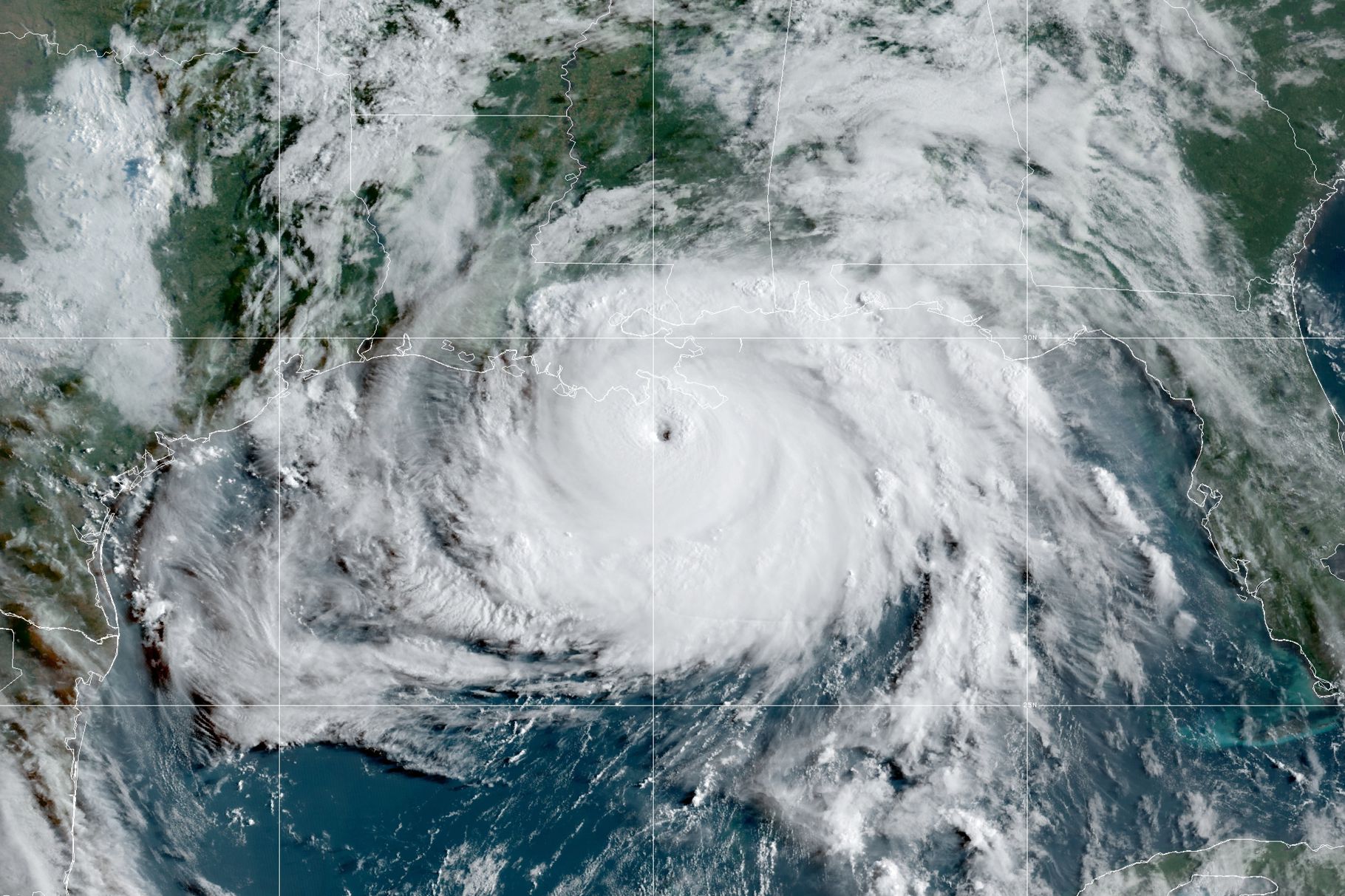

2021 was expected to be another above-average hurricane season, and it was another record-breaking year that surpassed all expectations.
Before the beginning of the season, the National Oceanic and Atmospheric Administration’s (NOAA) Climate Prediction Center (CPC) updated its definition of the average hurricane season using the timeframe 1991-2020 instead of 1981-2010. As a result, the “average” season now has 14 named storms and seven hurricanes, three of which are expected to be major (Category 3+) hurricanes.
(Photo source: GOES-East NOAA)
For the first time, the National Hurricane Center (NHC) began issuing tropical weather outlooks and forecasts on May 15 instead of June 1 as it recognized that severe tropical weather is forming earlier in the calendar year. 2021 was also the first year that the NOAA began using a new list of supplemental names instead of the Greek alphabet – though none of those names were needed. Experts from the NOAA, the United Kingdom’s Met Office, Colorado State University, The Weather Channel and others all predicted an above-average season ranging from nine to 20 named storms, six to ten hurricanes and three to five major hurricanes. The final tally for the 2021 season was 21 named storms, seven hurricanes and four major hurricanes.
Latest Updates
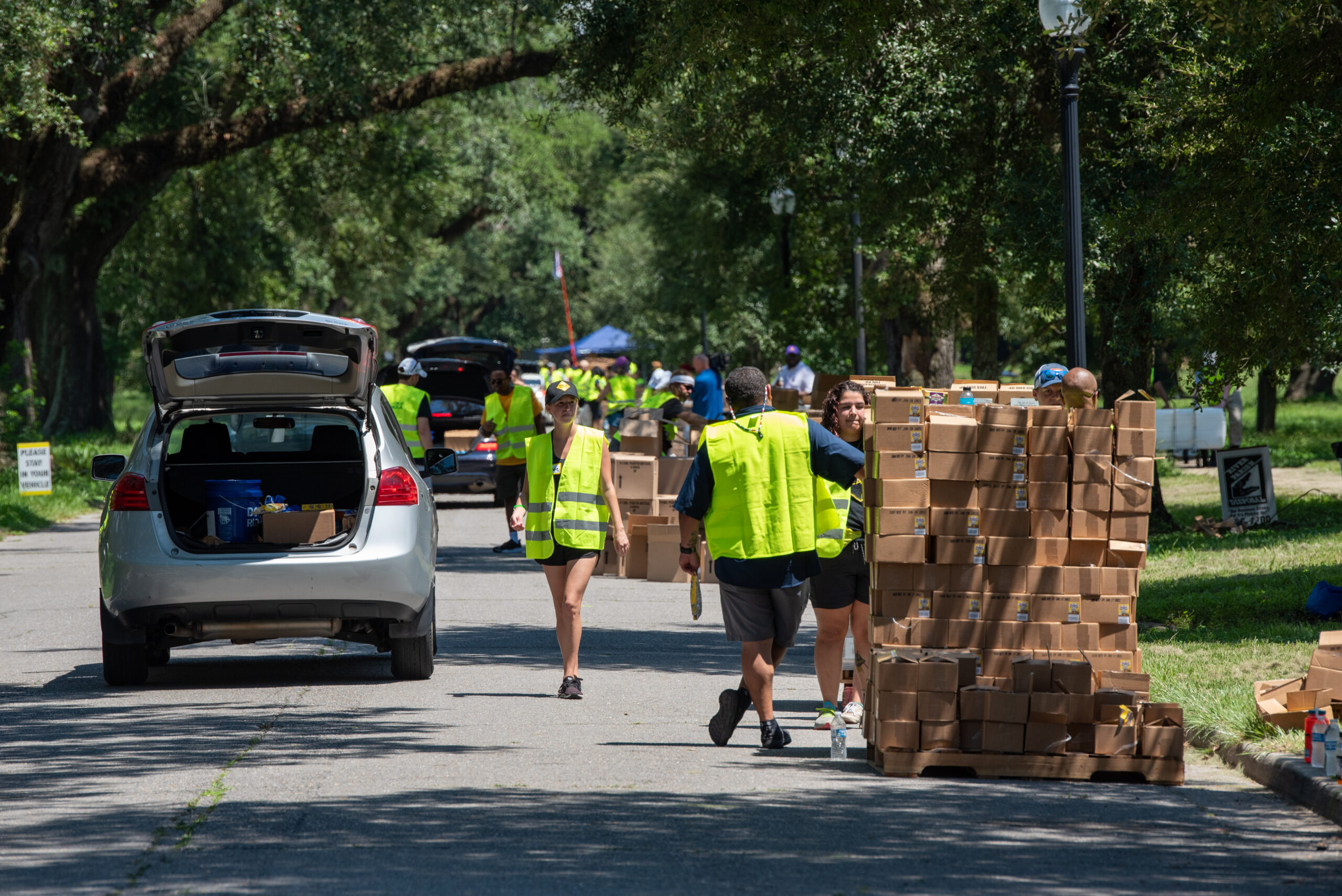
CDP Atlantic Hurricane Season grants support recovery from 2020 and 2021 storms
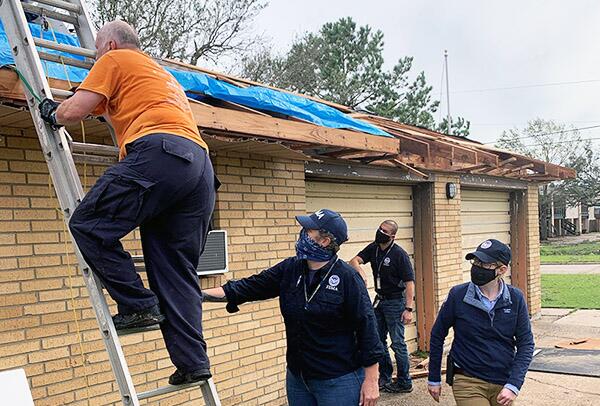
How do we get beyond tarps?
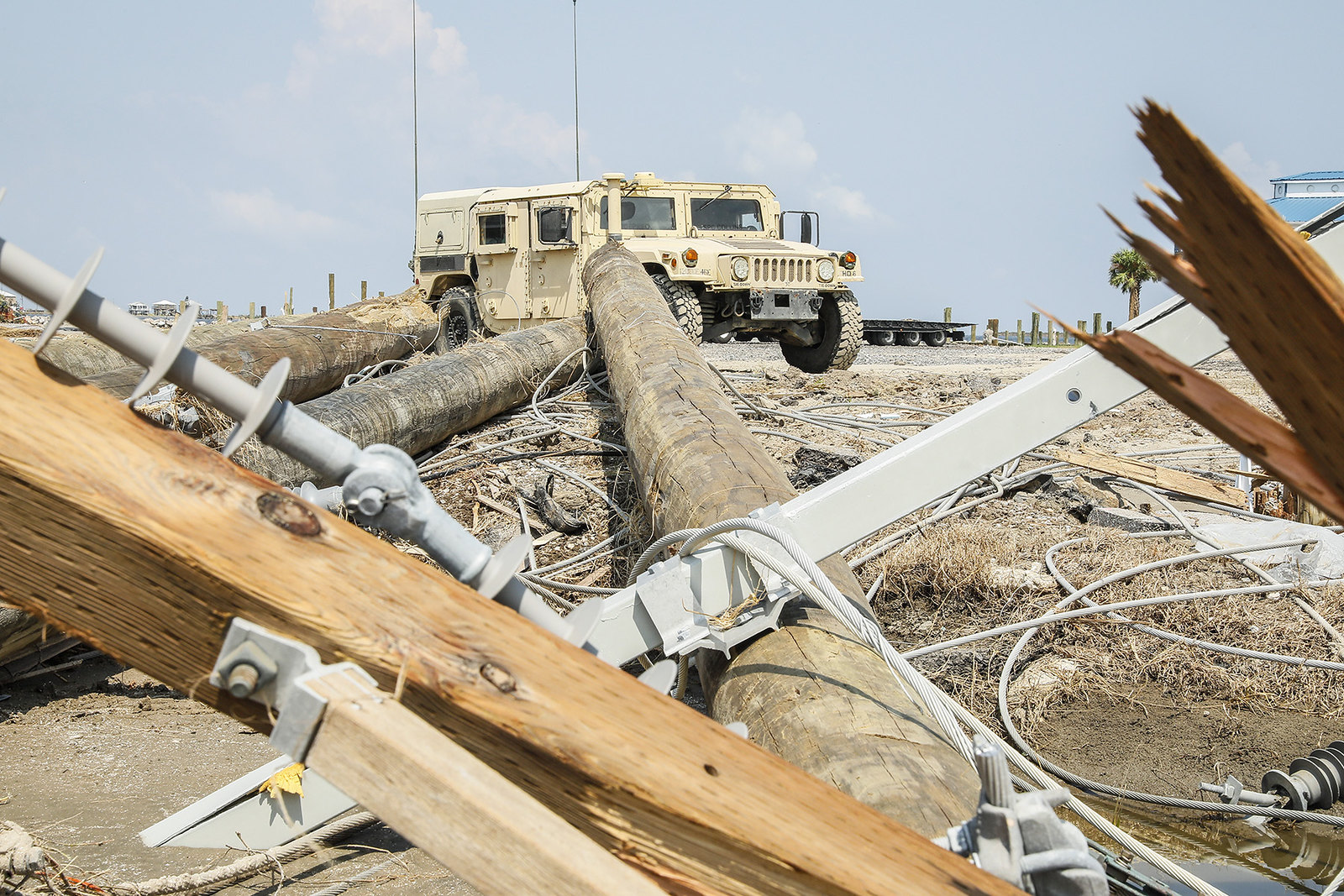
Second round of grants to support Hurricane Ida recovery and preparation for 2022 hurricane season

Announcing first round of seven grants totaling more than $1.3 million to support Hurricane Ida recovery
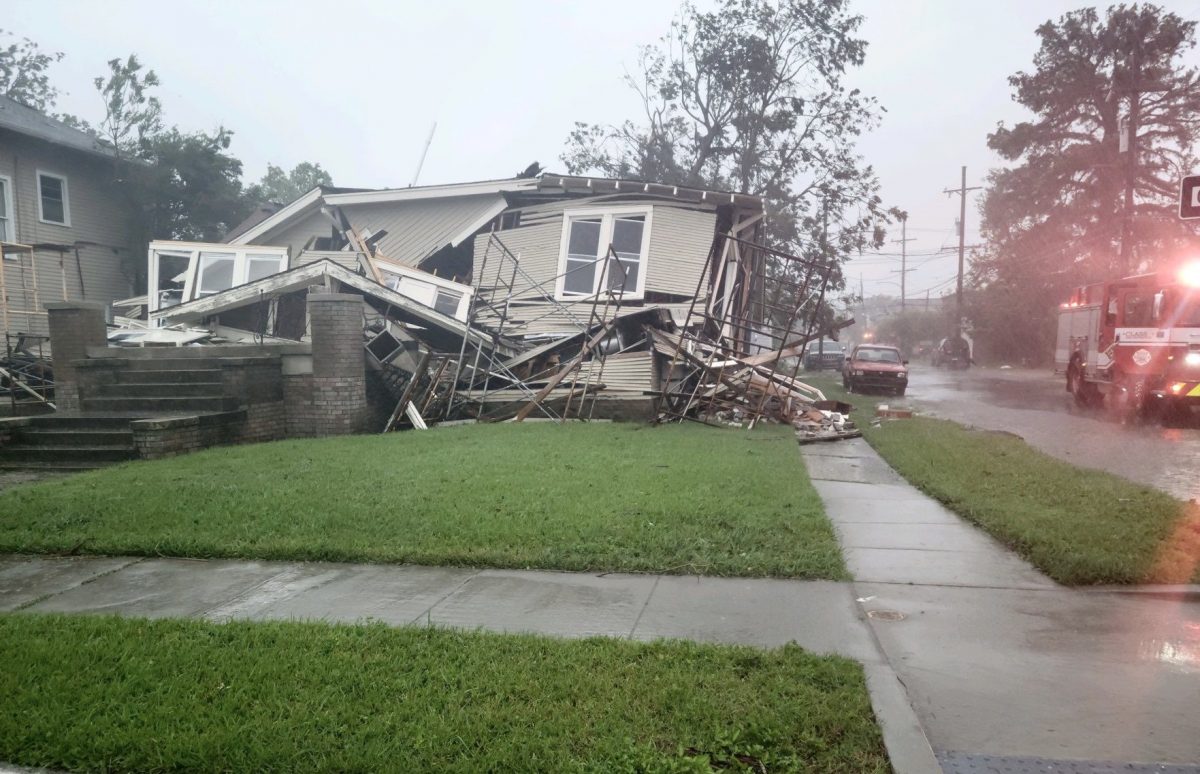
Hurricane Ida: A plea for philanthropy to follow trusted basics for trusted outcomes
What was the overall impact of the 2021 hurricane season?
According to the National Centers for Environmental Information, this year’s four biggest U.S. tropical cyclones cost a combined $67 billion in insured losses, but final costs could exceed $100 billion.
Tropical Storm Nicholas
Nicholas made landfall along Texas’ Matagorda Peninsula early in the morning of Sept. 14. It caused widespread power outages, including 500,000 across Texas – though most were restored four days later. The storm slid along the gulf coast of Texas toward Louisiana bringing heavy rain and flooding to areas that were hit by Hurricane Ida just weeks before. This further delayed the repairs and left Louisiana shelters at full capacity as people are unable to return home to places without electricity. There were no reported deaths as a result of Hurricane Nicholas, but insured losses alone are expected to be $1.1 billion to $2.2 billion.
Hurricane Larry
After building up significant strength over the Atlantic, Hurricane Larry made landfall on Sept. 10 over the far east of the Canadian province of Newfoundland as a Category 1 hurricane with winds as strong as 74 mph (120 km/h) and gusts up to 112 mph (180 km/h). At the height of the storm, approximately 60,000 customers were without power, but power was restored to over 90% of customers within two days. There was significant property damage and tree damage but no deaths or injuries were reported. Larry’s remnants continued to move north where they struck the coast of Greenland and dumped two to three feet of snow.
Hurricane Ida
Even before it became a tropical depression, Ida caused significant flooding in Venezuela leading to deaths and approximately 1,200 homes being destroyed. Tropical Depression 9 formed southwest of Jamaica on Aug. 26 and quickly became the worst hurricane of 2021. It moved north, passing along the Cayman Islands before making landfall along Cuba’s Isle of Youth in the afternoon of Aug. 27. It caused some damage in Cuba, largely damaged roofs, downed wires and downed trees. No deaths or injuries were reported in Cuba but it is anticipated that the storm caused $100 million in damage and will cost at least $40 million in insured losses.
The storm continued to move north across Cuba before entering the Gulf of Mexico late that night. As it moved north through the Gulf of Mexico, it gathered strength and began to slow down as it approached the continental U.S. It came ashore as a Category 4 hurricane near Port Fourchon, Louisiana on Aug. 29, 16 years to the day after Hurricane Katrina and nine years after Hurricane Isaac. After landfall, it slowed down and stalled over southern Louisiana, dropping large amounts of rain and bringing heavy winds along with extremely high tides. More than 1.1 million customers in Louisiana were estimated to have lost power, including the entire city of New Orleans.
Within the U.S., it is expected that Ida will cost between $31 billion and $44 billion. Many residents were left without homes and jobs as the storm damaged significant parts of the economy including the agriculture, oil and gas infrastructure, fishing/seafood and tourism industries in the region. While the Port of New Orleans was able to open within a week, the Port of South Louisiana and the Port Fourchon both had significant damage. Commercial fishing operators expected “six-figure losses” from Ida as some watched their homes and businesses be blown away while they rode out the storm in their boats. The extended closure of access to the lower parishes meant that people were unable to save homes and boats from damage.
After moving through Louisiana, Ida continued to move up through Mississippi, where its remnants brought heavy rain that washed out a highway. As Ida moved north along the east coast, its heavy rains caught many people off-guard, leading New York Governor Kathy Hochul to declare a state of emergency as rescuers struggled to reach those who needed help. Pictures and videos posted on social media showed torrents of water pouring into underground spaces in New York City, including the subway system where people were trapped as water flowed down stairs into some stations.
Across all impacted areas, it is estimated that 115 deaths can be attributed to Ida, including 95 in the United States and 20 in Venezuela. The most deaths were in Louisiana and New Jersey, with others scattered across the northeast and southern states. Many of the U.S. deaths were caused by carbon monoxide poisoning, or because of improper evacuations of nursing homes. Several of the deaths are related to the high temperatures caused by the loss of power.
Heavy rains soaked the Maritime provinces in Canada as Ida moved north, also bringing heavy winds to the areas.
Hurricane Grace
As Tropical Storm Fred moved across the Caribbean, another storm began forming west of Cabo Verde on Aug. 13 and moving across the Atlantic. By the next morning, it had officially become Tropical Storm Grace and warnings were issued for most of the islands in the Caribbean. Grace’s track was initially very similar to Fred’s, moving offshore along the south coast of Puerto Rico before making landfall over the south of the Dominican Republic the morning of Aug. 16. The storm moved along the south shore of Haiti and made a direct hit to the regions that were devastated by an M7.2 earthquake only two days earlier.
The impact of Tropical Storm Grace on Haiti will be hard to determine, but the devastation caused by the earthquake means that many people were left without shelter before the storm arrived. There were undoubtedly more deaths than would have otherwise occurred as Grace hampered rescue and relief efforts from the earthquake.
After striking Haiti, Grace moved back out over the Caribbean and gathered strength to become a hurricane before making a second landfall over the Yucatan Peninsula early in the morning of Aug. 19. It knocked out power to almost 700,000 people, but didn’t cause any deaths or injuries.
The system continued almost due west, strengthening into a Category 3 hurricane before making landfall on mainland Mexico around 1 a.m. local time on Aug. 21. This landfall caused severe flooding in the state of Veracruz where seven people died in the capital, Xalapa – six of whom were from the same family. An eighth person died in the nearby town of Poza Rica when they were trapped under a collapsed roof. After this third landfall, it quickly dissipated, and the system had disappeared by 4 p.m. Aug. 21, only to have its remnants re-emerge as Tropical Storm Marty over the Pacific.
Tropical Storm Fred
After a month-long break helped by dust from the Sahara and smoke from the western wildfires, the Atlantic hurricane season came back to life in mid-August. The NHC began issuing advisories about a potential tropical storm in the evening of Aug. 9. By the evening of August 10, the disturbance had officially become Tropical Storm Fred and was headed for the Virgin Islands, Puerto Rico and the island of Hispaniola – home to the Dominican Republic and Haiti.
Tropical Storm Fred moved along the south of Puerto Rico before making landfall on the south side of the Dominican Republic on the island of Hispaniola. It then moved northwest and out over the water off the north shore of Haiti. It meandered along the north shore of Cuba before briefly making landfall and moving out over the Gulf of Mexico. While there was damage reported across the Caribbean, there were no reported injuries or deaths. Fred made landfall a third time along the Florida panhandle in the evening of Aug. 16, where it spawned tornadoes. One death was attributed to Fred – a man whose car hydroplaned on a road and landed upside down in a water-filled ditch outside of Panama City.
Fred’s remnants continued north across much of the eastern United States where they caused heavy rain and flooding across a wide swath of the country, disrupting power to approximately 75,000 people along its path. At least five people died in North Carolina because of flooding, and multiple tornadoes were reported along its path including 16 reported in Georgia, two in North Carolina, one in South Carolina and at least two in Pennsylvania.
Hurricane Elsa
The National Hurricane Center began issuing warnings about a disturbance on the evening of June 30. By the morning of July 1, the disturbance had officially become Tropical Storm Elsa. This is the earliest fifth named storm in recorded history, beating last year’s record by five days and smashing through the historical average formation date for the fifth named storm of August 31. By 11 a.m. on July 3, it brought hurricane conditions to St. Vincent, St. Lucia and the rest of the windward islands before it bent north and headed towards Cuba, Jamaica and the island of Hispaniola – home to Haiti and the Dominican Republic.
As it moved through the Caribbean Sea, it lost some strength as its fringes passed over the southern end of Haiti and the island of Jamaica, and it was downgraded to a tropical storm again late in the day on July 3. As it approached Cuba, officials evacuated 180,000 people from its expected path before it made landfall around 2 p.m. on July 5. By July 6, three people had died – one in St. Lucia and two in the Dominican Republic. The Florida Keys started reporting tropical storm conditions the afternoon of June 6 as Elsa churned off the Gulf Coast of Florida. Hurricane Elsa continued to move along the Gulf Coast, making landfall in northern Florida on July 7. It killed one person before moving north into Georgia, injuring 10 people at the Naval Submarine Base Kings Bay. It moved north along the Atlantic Seaboard and eventually dissipated over the North Atlantic after bringing rain and post-tropical storm conditions to New England and the Canadian Maritimes.
Tropical Storm Claudette
Claudette entered Louisiana the morning of June 19 as a depression, but it strengthened inland to become a tropical storm about 45 miles southwest of New Orleans. Damage was more localized than initially predicted. Most of the damage occurred in Slidell, just east of New Orleans. This area was badly damaged in 2020’s Hurricane Zeta, but Slidell Mayor Greg Comer told Nola.com that the flooding caused by Claudette was among the worst he’d seen. “’I haven’t seen it like that since the 1995 floods,’ Cromer said. ‘The difference between then and last night was in 1995, we had 25 inches of rain in 24 hours. Last night we had 10 to 12 in three hours. If we’d had a fourth hour … we would’ve been looking a a substantial amount of damage this morning. We’d be looking at 6 to 12 inches of water in a bunch of houses, I think.’”
As the storm passed through Alabama on Saturday as a tropical depression, it led to the deaths of thirteen people; all under 30 years of age. Ten of them – including nine children – were killed in an 18-vehicle crash. Eight of the children were connected to the Tallapoosa County Girls Ranch, a housing program for at-risk children: four were camp residents, two were guests and two were the camp director’s children. The camp director was the only survivor in the camp van. A 29-year old man and his nine-month-old daughter were also killed in the crash. In addition, a 23-year-old woman was killed when her vehicle was swept away, and a 24-year-old man and a three-year-old boy were killed when a tree fell on their house. Tornadoes caused significant damage in Florida and Alabama. As the storm reached North Carolina early Monday morning, it returned to tropical storm strength – something that weather specialists expect to see only once in 1,400 years. Then, Claudette moved out over the Atlantic, where it dissipated into a low-pressure trough.
Housing
Many people who were affected by the 2021 Atlantic hurricane season continue to struggle with finding sustainable, safe and affordable housing – particularly those who lived in poverty before the storm, or because of the storm. The large swath of impacted areas has led to an extreme housing availability and affordability crisis.
Economic/community development
The compounding effects of COVID-19 have delayed economic and community development and recovery from these storms. Support for local economies, especially in rural areas, will be important for the community to fully recover.
Health/behavioral health
People of all ages are showing signs of PTSD and additional domestic issues with their families. Additionally, many of those living at or below poverty levels have put off addressing chronic health issues because of financial constraints. For those in Louisiana, the ongoing threat of hurricanes plus the residual trauma from previous storms is particularly challenging to navigate.
Legal assistance
Many people will require help navigating the complicated assistance process including people who are undocumented, migrant workers and those for whom English is not their first language. They will need significant legal resources to support their recovery.
Climate research
With the undeniable changes occurring in the global climate, more research is needed to better understand the causes and how best to predict, prevent and mitigate the effects of climate change.
Prevention and mitigation
Accurate planning requires accurate data and the challenges of keeping data up to date are immense – especially along ever-changing shorelines and rivers.

The CDP Atlantic Hurricane Season Recovery Fund is now a perpetual fund, allowing CDP the most flexibility to respond to philanthropic and humanitarian needs as they arise. You can make a gift to the fund to support recovery.
Contact CDP
Philanthropic contributions
If you would like to make a gift to the CDP Atlantic Hurricane Season Recovery Fund, please contact development.
Recovery updates
If you are a responding NGO or a donor, please send updates on how you are working on recovery from this disaster to Tanya Gulliver-Garcia.
Donor recommendations
If you are a donor looking for recommendations on how to help with disaster recovery, please email Regine A. Webster.
Philanthropic and government support
Last year, the Center for Disaster Philanthropy (CDP) removed the “annual” designation from its Atlantic Hurricane Season Recovery Fund to allow a broader focus on the full spectrum of the disaster cycle.
CDP has awarded the following grants through this Fund:
- Puerto Rico Community Foundation Inc. (PRCF) – $55,850 awarded in November 2021 to support building the resilience of the island of Culebra by providing critical gap-filing funding for an Economic Development Administration grant-funded solar project on the island. During this 14-month grant, the Mujeres de Islas, a community-based organization and anchor nonprofit in Culebra, along with the PRCF will develop a solar energy infrastructure project on Culebra; establish a solar management and servicing office in Culebra; and provide education and capacity building regarding the individual and collective management of the solar energy resource. The last major hurricane on the island was Hurricane Maria in 2017.
- United Way of South Louisiana – $135,000 awarded in February 2022, to expand their capacity to support the long-term recovery of the communities they serve over the next two years. Hiring a long-term recovery project manager will provide coordination and sustainability for the long process of community recovery for some of Louisiana’s most affected and most marginalized.
- Center of Hope for Tangipahoa Inc. – $200,000 awarded in March 2022 to support their work as the lead agency in coordinating the long-term recovery process from Hurricane Ida for Tangipahoa and St. Helena Parishes, Louisiana. Funding supports construction supervision and volunteer coordination as well as communications support.
- ToolBank – $100,000 awarded in April 2022 to provide partner organizations with the tools they need to help rebuild and repair houses of those affected by Hurricane Ida in Louisiana.
- VIA LINK – $85,000 awarded in April 2022 to collect, analyze and share data that will help inform the process for recovery from Hurricane Ida in 25 affected parishes in Louisiana.
Hurricane Ida
New York, New Jersey, Pennsylvania, Mississippi, Delaware, Connecticut and Louisiana all received major disaster declarations from President Biden.
- In New York, (DR-4615), FEMA has approved 34,488 IHP applications for $163,718,292.82 in assistance (as of Dec. 5) – an average of $4,747.11 per application.
- In New Jersey, there have been 38,616 applications approved in DR-4614 for a total of $191,353,268.19 (as of Dec. 5) – an average of $4,955.28 per application. In addition, FEMA has also allocated $953,920.50 in Public Assistance Grants.
- Pennsylvania (DR-4618) has had 28,882 IHP applications approved for $73,339,550.99 in assistance as of Dec. 5 – an average of $2,539.28 per application.
- In Delaware, there has been no funding approved in DR-4627.
- In Connecticut (DR-4629), there have been 966 applications approved for a total of $4,712,262.75 – an average of $4,878.12 per application.
- In Louisiana (DR-4611), there have been 553,674 IHP applications approved for $1,029,532,539.92 in assistance as of Oct. 5 – an average of $1,859.46 per application. FEMA also approved $29,033,885.46 in Public Assistance Grants.
- In Mississippi, there have been 2,055 applications approved in DR-4626 for a total of $6,914,299.60 – an average of $3,364.62 per application. FEMA also approved $518,701.15 in Public Assistance Grants.
Tropical Storm Fred
On Sept. 8, 2021, President Biden signed an emergency declaration (EM-4617) for North Carolina, authorizing Individual & Household support from FEMA. As of Dec. 5, FEMA had approved 732 applications for a total of $3,453,729.15 – an average of $4,718.21 per application. In addition, FEMA had also allocated $1,037,490.03 in Public Assistance Grants.
On Oct. 8, 2021, President Biden signed an emergency declaration (EM-4625) for New York authorizing Individual & Household support from FEMA. As of Dec. 5, FEMA had not approved any applications.
We welcome the republication of our content. Please credit the Center for Disaster Philanthropy.
Resources
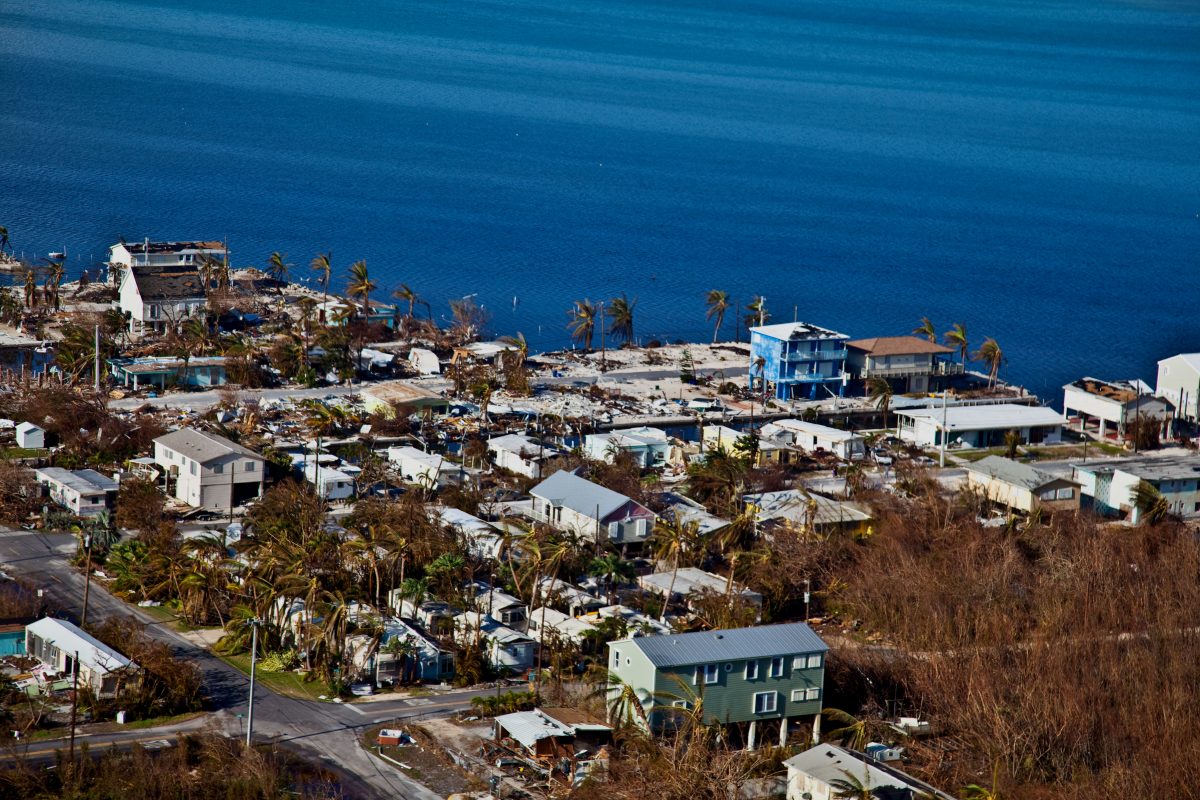
Hurricanes, Typhoons and Cyclones
Hurricanes, also called typhoons or cyclones, bring a triple threat: high winds, floods and possible tornadoes. But there’s another “triple” in play: they’re getting stronger, affecting larger stretches of coastline and more Americans are moving into hurricane-prone areas.
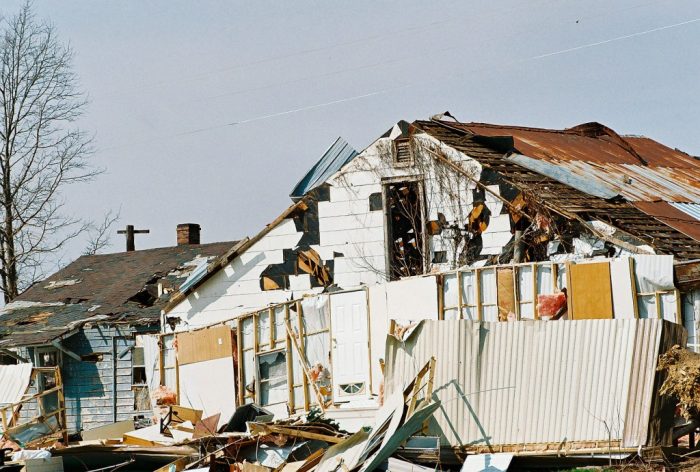
Insurance
Each natural disaster reminds us of the value of insurance to protect our homes and businesses. But with the news filled with stories about homeowners still waiting to settle claims, or insurance covering less damage than expected, what is the role of private insurance in disaster recovery?

National Voluntary Organizations Active in Disasters
Following a disaster, local, regional and national voluntary organizations are often the first to arrive to provide assistance. They are also the last to leave.